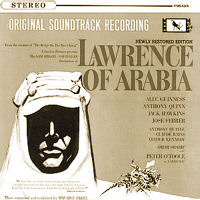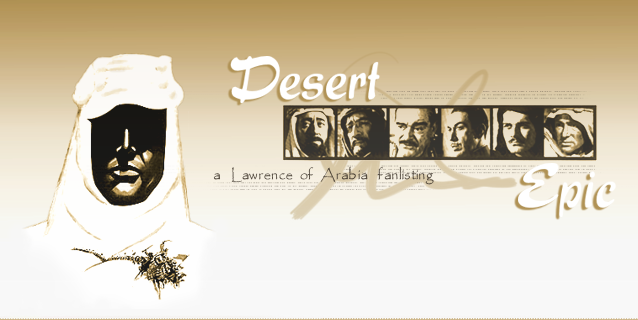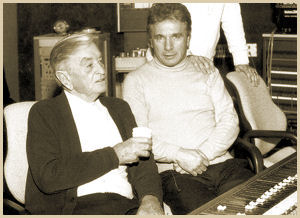soundtrack

The creative efforts of producer
Sam Spiegel and director
David Lean brought
to the screen The Bridge on The River Kwai, one of the greatest
pictures of all time. Bridge won nine Academy Awards and more than one
hundred other international honors. It also brought to the world
Colonel Bogey March, the whistling, marching tune which achieved
instant popularity.
For their next film together after The Bridge on the River Kwai,
Spiegel and
Lean chose to bring
to the screen the romantic adventure story of T.E. Lawrence,
Lawrence of Arabia,
the man whom Winston Churchill wrote: "I deem him one of the greatest
human beings alive in our time."
After two years of production in Jordan, Spain, Morocco and England,
Lawrence of Arabia
emerged as a magnificent desert adventure story, hailed by critics as
"one of the greatest motion pictures ever made".
To create the music for
Lawrence of Arabia,
Spiegel embarked on
a search for a composer that led him to an examination of the work of
the leading men of our time. What was needed was an artist capable of
translating into musical terms the amazing enigma of Lawrence, the
loneliness of the desert and the wild drumbeat of the nomad Bedouin
tribes lead by Lawrence. The music had to capture the fierce mood of
the allied fighting forces played against the counterpoint of a man
leading and being led by his own destiny.
All of this was accomplished with the selection of young French
composer
Maurice Jarre.
Jarre holds a
high place in contemporary French music, both popular and classical. A
dedicated musician, he interrupted his months of work on Lawrence only
once, returning to the continent to receive an award for his opera "Les
Filles du Feu".
In composing for
Lawrence
of Arabia Jarre knew that the standard instruments of the
classical symphony were needed but, in addition, he felt that only
through contemporary electronic musical instruments could he recreate
the mystery of Lawrence the Man against the background of the violence
of desert war and the solitude of desert stillness.
Jarre imported
an Onde Martinote from his native France to the London scoring stage.
The Onde Martinote is an electronic musical instrument with a keyboard
like a piano, but capable of an auditory range beyond all other
instruments in use today. So unique is this instrument that special
musicians capable of playing it had to be flown in from Paris. Used
primarily in the desert sequences, the unusual sound of the Onde
Martinote adds all of the romance and mystery of the desert to the
score. The cithare, a companion electronic instrument with a more
idealized tonal quality, is also used in the orchestration.
Throughout the film
Jarre
depended on three major themes, punctuating them with his electronic
instruments and a high degree of percussion to mold the desired mood.
The "Lawrence" theme illustrates Lawrence's love of the desert and his
internal psychological conflicts. The "Arab" theme, used extensively in
many variations, suggests the ever-changing moods of the desert people
and their barbarity, humor and isolation. The recurring "home" theme
epitomizes the ever-present longing of every man away from his
birthplace.
And finally, Jarre utilizes a march, "The Voice of the Guns", composed
by Kenneth J. Alford, who wrote the popular "Colonel Bogey March".



